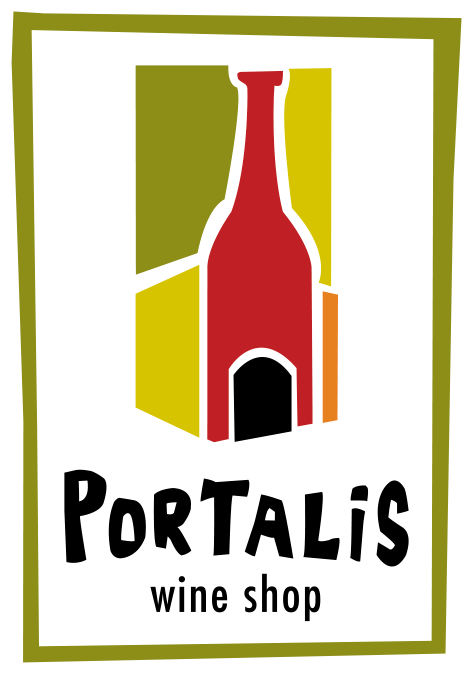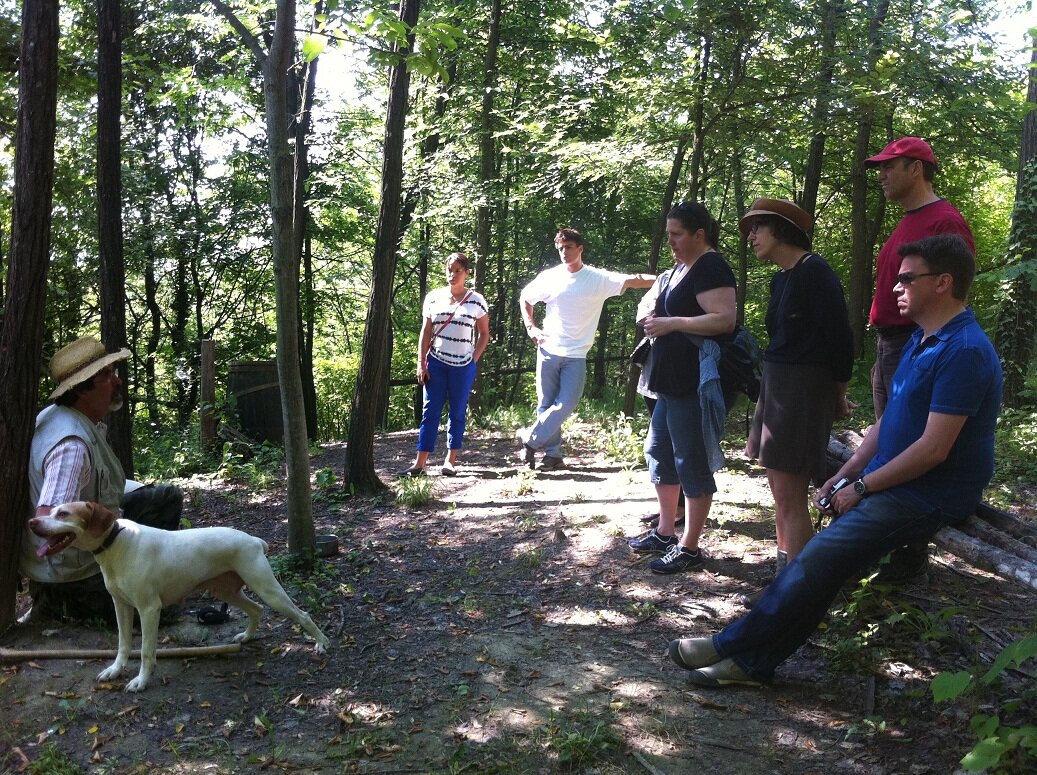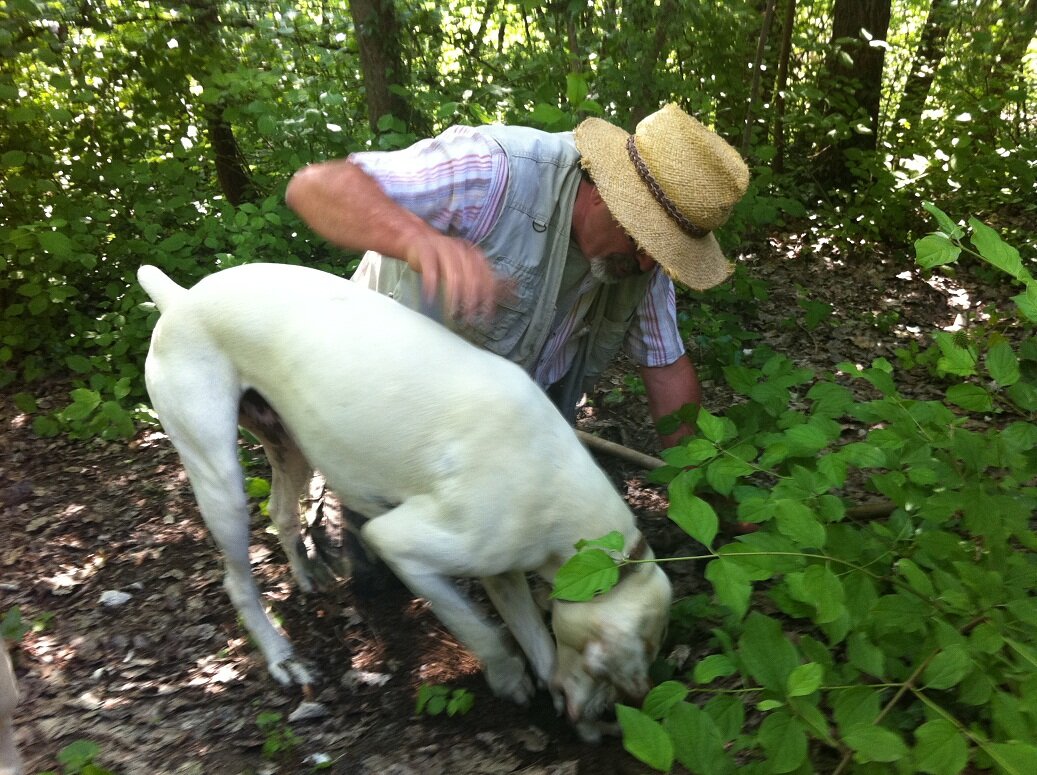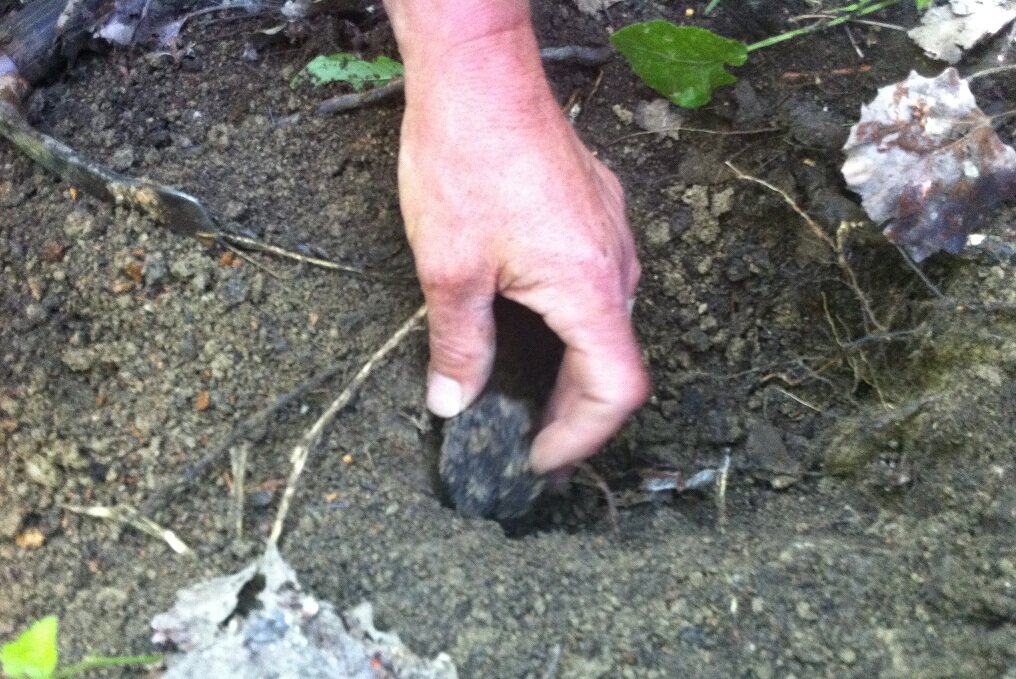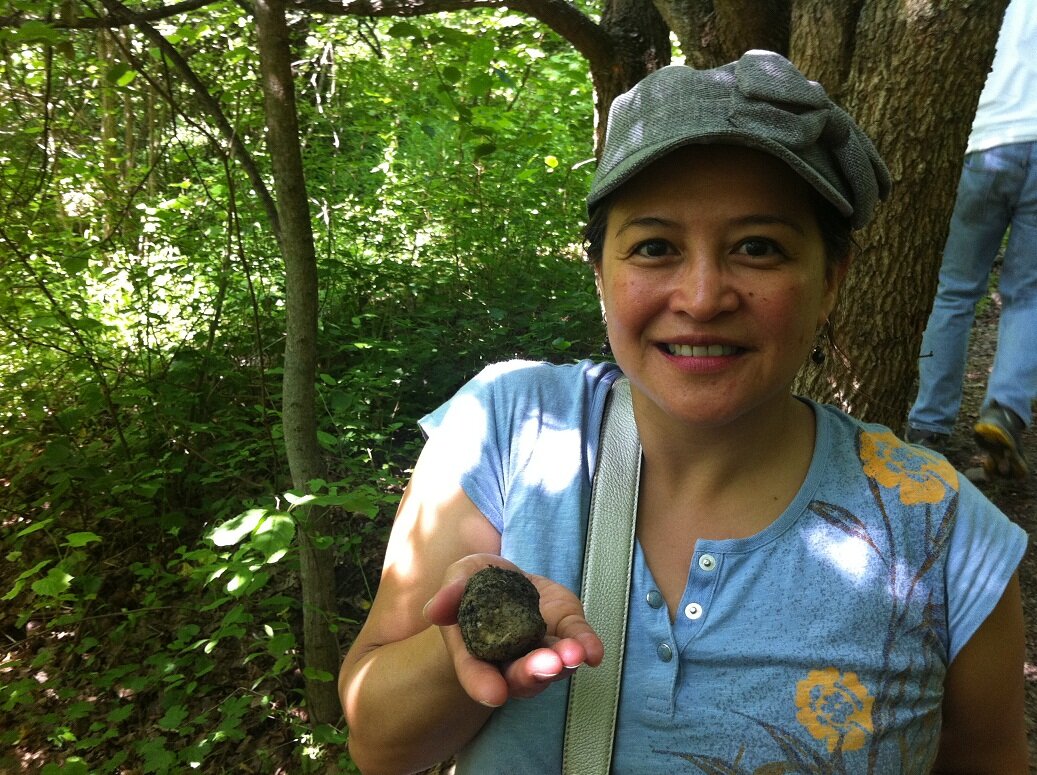Truffle Hunting in Piedmont
Gina led her most recent Premier Vineyard Tours group on a truffle hunt!
Truffles are hypogeal fungi that are born and live under the earth (think of it as a subterranean mushroom). They can be found as shallow as a few centimeters beneath the earth or, in rare cases a meter underground. Their size can also greatly vary from just a few grams to a kilo. (Wow!) Truffles grow in symbiosis with the roots of trees in specific microclimates. The most common truffle trees are oak, lime, poplar, beech, hazel, willow and douglas fir. The best growing conditions for the truffle are calcareous soils with spring and summer rains versus long hot summers. The most sought after truffle is the rare white truffle (also known as tuber magnutum pico) the "king of truffles!" This rare truffle can be found in Northern & Central Italy, Croatian and Istrian peninsulas.
One of the highlights from my recent wine tour of Piedmont, Italy, was a truffle hunt. We took a break from the wine road and headed to nearby La Casa del Trifulau; a fifth-generation family of truffle hunters or "trifulaus". La Casa del Trifulau truffle farm is now run by brothers Natale & Giorgio Romagnolo in Costigliole d'Asti. Upon our arrival, both brothers greeted us with an introduction to their hunting dogs as well as a brief history of truffles. There are hundreds of species of truffles, but our goal for that day was to hunt for the summer black truffle or "scorzone."
We set out late in the morning to the forest across the street from their farm. With our truffle dogs Diana (Roman Goddess of the Hunt) and Brio (her son) racing ahead, Giorgio started calling out orders to them and gently tapping his staff on tree trunks to keep the dogs focused. As we walked up the forest trail, the dogs were diligently sniffing the earth, darting back and forth with Giorgio's voice never far. Then suddenly, Diana barked and started to dig frantically near the base of a poplar tree. Giorgio kneeled down beside her and called Brio over to help. He explained it was important for Brio to be a part of the discovery so that he can learn to find his own truffles. When Diana got close to the truffle, she started digging with one paw, so as not to damage the truffle. At this point, Giorgio took over with a zappino: a pick-like tool that helps set the truffle free. Within a few seconds he had the truffle in his hand, congratulated the dogs, and gave them a treat. It was an exhilarating moment for all of us as we took turns holding and smelling the precious discovery! We were lucky enough to go through this excitement two more times on our hour long hunt, and even witnessed Brio 'the rookie' find his own large truffle. Bravo, Brio!
When we returned, Natale prepared some local salumi, with a local goat cheese and a generous amount of shaved truffle on top. We even took turns shaving our own truffle! Natale told us stories of his childhood and shared his favorite truffle recipes as we sipped on local Barbera wine and feasted on fresh truffles. This was a very good day indeed. I look forward to returning in the fall sometime to join Diana and Brio on their quest for the rare white truffle!
The most surprising thing I learned on our truffle tour is that the intoxicating aroma of truffles only lasts a few weeks. After that, the spores die and it no longer has its enticing scent. Natale warned us about truffle oils in the market, explaining that the majority of them use a synthetic chemical that mimics the smell of the truffle. How do you know if your oil is authentic or not? Check the label and if it says "truffle essence" then it is synthetic. As of today, there is only one known white truffle oil in the US market that doesn't use a synthetic chemical and it's produced by Oregon chef & truffle hunter Jack Czarnecki. Thanks to his background in bacteriology, Jack has developed a method that safeguards the oil from bacterial growth and keeps the truffle perfectly preserved. Check out his products here: https://oregontruffleoil.com/
What to drink with your next truffle dish? I suggest the following wines available at Portalis:
Vinchio-Vaglio Serra Barbera Tre Vescovi
Pelassa Barbera d'Alba San Pancrazio
Nottola Vino Nobile di Montepulciano
Nottola Chianti Colli dei Senesi
Buon appetito!
Gina
For more information on Gina's tours to Italy visit her website at: www.premiervineyardtours.com
